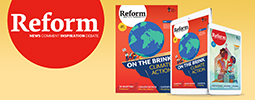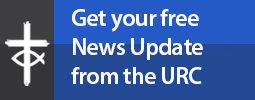 A free guide to help you write for the web and maximise the reach of your online content by improving your Search Engine Optimisation (SEO).
A free guide to help you write for the web and maximise the reach of your online content by improving your Search Engine Optimisation (SEO).
Clear, plain and easy to understand writing is essential for good web content and for good ratings on search engines (Google, Bing, Baidu but this also includes Facebook and YouTube) – this includes headings, subheadings, links, the opening paragraph and all copy.
-
It helps the reader find and understand what a page is about and decide if it’s the content they want
-
It helps search engines understand what a page is about and how to index it correctly, so it comes up in the right searches (SEO)
How to construct your page content
The way you construct your page content is important. A clear headline, opening sentence and the use of subheadings will make your page easier to read and understand, and will help search engines find it.
Headings/article titles
It’s useful to see headings/article titles as the main signpost to content. These headings are called H1 headings in web terminology.
Every title must give the user a strong indication of what the content is about, especially when the title is used elsewhere as link copy.
A look on the BBC News website always gives good examples: 'Seven Greek islands added to England’s quarantine list'. It’s clear what the article is about. If you try and be clever and not factual, then both visitors and search engines won’t read or index your content. Whereas 'Tinos and Serifos quarantine anguish' sounds like a couple going through a difficult time, and nothing like the story about the Greek islands that have been added to the self-isolation list.
Make your heading as clear and to the point as possible. Make it relevant to the content on the page. Keep the title length to 50-60 characters.
If you’re writing or editing web content, ask yourself what the article is about and what terms/keywords you would use if you were to look for it on the internet. The words you’d use to search for it should be feature in the words you put in the article title.
For example, a good title for a page that provides advice for churches during the pandemic is ‘Advice to churches about Coronavirus’. Simply put, this does exactly what it says on the tin. If you’re using Google, then if you put in ‘advice church coronavirus’ then the URC’s web page appears on the first page of results.
Headings are often used as links on other pages so think how useful and clear the title is on its own. When it’s used as the link copy on another page does it explain to the user what the link and subsequent article is about and encourage them read it? You must make sure the title works in this environment too.
You must also avoid putting symbols in the heading. People don’t tend to use them as search terms.
Opening paragraph
Your opening paragraph should be a succinct summary of the article. The paragraph should explain what the article is about and should be keyword-heavy in its description of it. If a content page is offering free resources to families staying at home and praying during due to the pandemic, you need to say that.
For example, the opening paragraph for the content page mentioned above would be: ‘Families on Faith Adventures at Home is a free resource to help families at home during lockdown worship and pray together and develop their faith.’
It’s important to be aware that when you search for content using a search engine the list of matching articles will include the title and the opening paragraph text. This is why’s it’s crucial for it to clearly explain what the article is about.
Article copy
The way to structure the order of the next paragraphs in the article is to think of their order of importance. Make the second/ third/fourth paragraphs contain the second/third/fourth most important areas of content.
You might find it helpful to think of the content page as an upside-down pyramid presenting content in a hierarchy of importance – the most important information at the beginning and tapering off towards the end.
The reason for writing or editing your article like this is because people tend to skim content online. By putting important content higher up the page, you’re helping ensure it is read.
When making sure vital information is at the top of page, make sure it’s not expressed in an image. Important info must always be in the body copy as text. This is because screen readers, used by people who are blind or partially sighted, are not able to read the info on the image and this makes the page inaccessible to them.
Another reason is that images, especially event posters, often flag links for further information, such as email addresses or links to Eventbrite. However, they don’t work as links when on an image. The user can’t follow them to get more info or sign up to the event.
Not all web content can or should be structured in this way. A reflection piece or a personal blog doesn’t always suit the above format. However, when writing or editing this type of content, you must ensure the page has a clear title and opening sentence as this will help people find it.
Subheadings
Subheadings are useful to the reader and for search engines, especially if the article is complex or has many sections.
They’re especially useful for articles that are guides or provide ‘how-to’ information.
The main subheading, called H2 headings in web terminology, flags up sections that are of importance or part of the story that is vital to the article.
Other subheadings (H3, H4, H5 and H6) can be used if you think there’s a need to flag less important areas of the page.
Subheadings also break up the page – the more paragraphs you use, the easier it is to read on screen.
Search engines scan subheadings to help them understand and correctly index web content. That is why subheadings also need to be clear, concise and keyword heavy.
Search engines rate H1 headings (article titles) as the most important, followed by H2, H3 and H4, H5 and H6 subheadings.
Calls to action (CTA) in articles
If a content page has an important call to action, it’s vital the heading and first paragraph indicate this and explain what it is and why it’s needed.
For example, the title could be: Help us keep Kitkat Fairtrade
Opening paragraph: Nestle, the producer of Kitkat, has announced plans to drop the Fairtrade symbol from the chocolate bar. As a result, 27,000 sugar and cocoa farmers will lose the Fairtrade Premium annually and this will lead to increased poverty. We’re backing a petition urging Nestle to change its mind. Join us.
An article with such an evident action in its title and first paragraph makes putting the CTA – in this case a link to a petition – under the first paragraph a sensible choice. You can still put the CTA at the bottom of the page as a final reminder to act.
However, not all CTAs are as obvious or as urgent as the above example. Many CTAs are about reading a prayer, a reflection or downloading a resource. But if that is what you want the user to do, the content on the page should make this easy to find by putting this info nearer the top of the page and not making people scroll down to find it.
Metadata – really, this is something you have to do!
The metadata of a website page is the page’s title, description and keywords. It’s crucial that these are filled out in a clear and concise way.
As you have written your content in an SEO and user-friendly way (see above!), then you should use the title you’ve given the article in ‘Page title’ field and the opening paragraph in ‘Page description’. You can adapt and abbreviate them if you wish but they should be similar.
As for keywords, look at your article and think of the terms and keywords you’ve used in the headings, especially the title, and the opening paragraph.
These are the terms that are needed in this field. Keep the terms short – one, two or three words where possible – always start the list with the organisation name and add the keywords in the order of importance.
This is a good example of an SEO and user-friendly content page on the URC website: Coronavirus: URC guidance around face coverings
The metadata fields are:
Page title: Coronavirus: URC guidance around face coverings
Page description: The United Reformed Church Synod Moderators strongly encourage the use of face coverings for all people attending worship and other URC-related events that involve meeting face-to-face
Keywords: URC, United Reformed Church, coronavirus, pandemic, covid-19, covid19, facemasks, face masks, URC guidance facemasks, synods
Downloadable resources
Where possible, put content up as web pages rather than as a downloadable document. The reasons for this are:
-
Search engines find it easier to read and index web pages so this means your content will be found quicker
-
Screenreaders have trouble reading downloadable documents and this means your content is inaccessible to users who are blind or partially sighted if you put it up in this format
-
People accessing the website using mobile phones – a growing trend – often have trouble downloading documents as they don’t have the right software or sufficient memory
-
They take traffic away from the website and interrupt the user journey
This doesn’t mean you can’t put up downloadable resources. If it’s a very long document, a printable resource such as poster, a document that requires a signature etc, then putting content up as a downloadable resource is still the best option.
However, if you put content up in a downloadable format you must let the user know the file type and size. This information gives them the option to decide whether or not to download it.
Writing for the web – best practice
Before you write: ask yourself the big questions
-
Who is my reader? What will interest them?
-
What is the one thing you want them to take away?
-
Make that your key message
-
What do you want them to feel?
-
What do you want them to do?
Have a conversation. For example, some writers talk to themselves and imagine delivering their article as a speech. They record themselves and then play back that recording before committing it to paper.
Our words versus the reader’s words
-
Use a warm, human, conversational style – as if you were chatting to a friend in a café
-
Put the reader at the heart of the copy – use ‘you’ more than ‘we’
-
Ask questions, especially if asking people to share something on Twitter, to make people feel part of a conversation: What do you think about the Holy Spirit?
Don’t overshare and don’t hide your call to action
Look at the following two examples from Christian Aid – which one makes you want to take action?
- In this podcast Coree Steadman, Christian Aid’s regional emergency manager for Asia and the Middle East, talks about the humanitarian situation on the ground and explains how our local partners are helping with the relief effort in the wake of Typhoon Haiyan. Please donate to our emergency appeal today
- Your support means we can put a world-class team of doctors and nurses right there, by an injured child’s side, in the first few hours after a disaster strikes
Use questions are part of a conversation
-
In this evening? Tune into Channel 4 News at 7pm and see the incredible difference one church is making to people living on the streets of Manchester
-
Can’t think what to buy mum for Christmas? Our Fairtrade festive wish list is the answer to your prayers
-
What does the United Reformed Church think about same-sex marriage?
Make it snappy
People read differently online: they scan. One study found that on average most users spend less than 15 seconds on a web page.
Inject pace
One idea per sentence but vary its length.
Use simple and direct language.
Use verbs to make sentences active - ‘Rachel caught the bus’ not ‘The bus was caught by Rachel’
Mix it up
Write short sentences. And place them strategically next to longer ones like this. It’ll flow nicely.
Web writing dos and don’ts
When you’re writing for the web, there are numerous channels – social media, blogs, emails, webpages, etc – that require different writing skills.
A Facebook post is different to a Tweet, a blog reflection is different to a webpage introducing your church to someone who’s looking for somewhere new to worship.
Despite the differences, all of them are ways to communicate with other human beings. So it’s helpful to have another person in mind when you write so you can think about what would engage them.
The question about what you want people to feel is crucial. People will forget the factual information you give them very quickly – within ten minutes, research has shown – but the emotion will stay with them.
Other hints and tips
Many people feel the need to craft the perfect opening sentence, like there is some ideal formulation of words, but no such formulation of words exist. You’ll find if you let all of that go and just write what comes into your head, you’ll write better.
Remember no one can read your work until you press publish, so you can go back and rewrite as many times as you like. That gives you licence to really just splurge ideas onto a page on your first draft and not worry about grammar etc.
In the film Finding Forester, JD Salinger (played by Sean Connery) gets his young prodigy, who is experiencing writer’s block, to just hit the keys of his typewriter. So he starts typing nonsense, but after a while words and ideas begin to come and he is free to write again. I think that’s about letting go of the need to get your writing ‘right’ and just go for it.
Conversational style
Almost all organisations use a conversational style – look at Virgin Media’s terms and conditions to see how they have rewritten their small but important print. Why? It’s been shown to be more engaging and doesn’t undermine the credibility of what you’re saying, even in more technical documents.
Organisations can talk a lot about themselves and use their own words, or jargon. That rarely makes for good conversation, especially if what is being read is the first thing that someone new is reading about the organisation.
Look at these examples from the BBC:
- Royal profiles give up little-known nugget - this article about the Duke and Duchess of Sussex (Harry and Meghan) uses a lot of short paragraphs, lots of sub heads, many images, plenty of white space (another device making the article easier to read), so that even though it’s a long page (1,100 words), it doesn’t read or feel like a long read.
-
Is it right to say people caught in a terror scare 'panic'? - this article starts off with some long sentences at the start, but after the 7th paragraph it starts to fire off short, sharp sentences as it starts talking about more abstract concepts like people’s psychological reactions. It pulls you in, immerses you in the thoughts of those who were reacting to the incident, and then goes into the more usual details about the event.
-
Grenfell Tower insulation 'never passed fire safety test' - the first paragraph really encapsulates the whole piece. If you didn’t read anything else, then that would give you the crux of the story.
Structurally, you usually start with the most newsworthy aspect, not what happened first.
You rarely structure an article chronologically. You wouldn’t start an article about Grenfell by talking about the original fire a year after it happened. You start with what’s new and then build on that key point, perhaps bringing in what happened during the original fire towards the end.
This is the web. There’s no single correct structure and many people prefer to start with a case study.
But there are other possible structures you could use: World Cup 2018: Belgium's Radja Nainggolan quits internationals after squad omission, an example of a news story being combined into a football match team announcement.
There are many possibilities when writing for the web and you can experiment. Some will like to read the first paragraph and move on. Others will want a longer read than the one offered.
And with insights such as Google Analytics to measure what works well and what doesn’t, you can keep repeating the content that works.
- Download this guide as a PDF (2.5kb)




